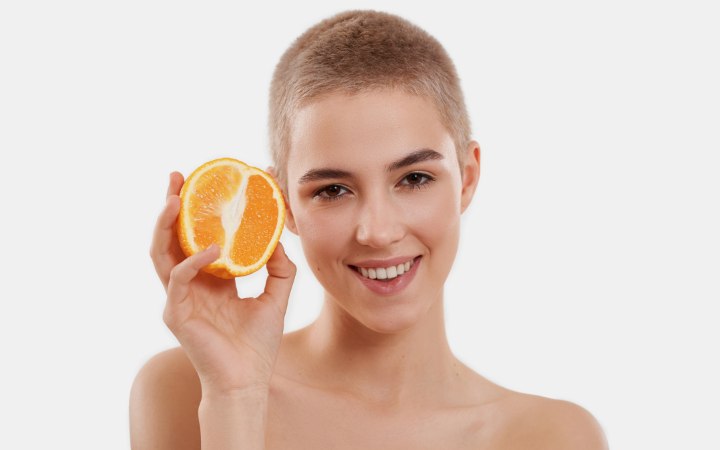Fruits and Vegetables for Beauty

Some people make the mistake of assuming that keywords like “botanical” and “organic” are simply marketing catchphrases that are designed to allow companies to charge premium prices for mundane products. However, according to university studies, some of our favorite fruits and vegetables offer remarkable benefits even if you don’t eat them.
Pumpkin, for instance, is a strong antioxidant and exfoliator, while cranberry's vitamin C can help prevent bacteria from growing on the skin, which is good for people with acne-prone or combination skin.
Apples can be a good conditioner and toner, and apart from its use in a popular “pectin” shampoo a few decades ago, surprisingly isn't more popular in skin-care products. Apples have vitamin C, which has been shown to protect and repair skin cells, without the drying effect of citrus fruits such as lemon and grapefruit.
Wheatgrass is good for you — inside and out – it is recommended for dry and mature skin because it is reparative and fights free radicals.
Banana is a gentle, inert fruit that can be used on the skin and hair and is moisturizing, calming and soothing. It can be mixed with oatmeal and honey for a face mask. You can even use it to tame dry, curly hair.
Turmeric is a tropical root, and a key ingredient in curry powder but, it is also used in Malaysia as an anti-inflammatory and a healing ingredient.
Watermelon and tomatoes are excellent sources of lycopene, which is a powerful antioxidant. In earlier periods, women would use these fruits crushed as a skin treatment for a healthy glow.
Even with the fact that these ingredients are all natural, it should be remembered that there's probably as much risk of an allergic reaction to a fruit- or vegetable-based ingredient as there is to a chemical one. Even if there isn’t an initial reaction, contact allergies can develop over time with repetitive use.
You should test any new product on the inner side of the arm – whether it’s store-bought or homemade from your own ingredients. The inner arm is similar to the skin on the face but any reactions are not usually as unpleasant or obvious if such do occur. Pay attention to the effects of ingredients, just like you would with chemical formulas. Start either with a mild formula or a small amount of product, then, if it's not irritating, ramp up use from there.
Botanicals could be skin-care successes. Try mixing two cups of strongly-brewed green tea with half a cup of cranberry juice and use it as a toner following your normal cleansing routine. (Be sure to allow it to cool first.)
You can expect to find more of these commonly-eaten botanical ingredients as global barriers continue to blur. More and more makers are taking cues from other countries’ traditions to create new products and treatments. For instance, there's a long tradition in Malaysia of treating beauty both topically and through diet — often doubling up on the same herbs, oils and extracts.
The erstwhile exotic Pegaga or gotu kola, sometimes eaten as a salad leaf, is well known for what it can do for skin quality, elasticity and skin repair. Try grinding it with a mortar and pestle and use it as a scrub with rice flour and coconut oil. The combination helps to soften the skin, exfoliate dead cells and balance oiliness.
There are a half-dozen uses for grape byproducts. Vine sap is used to lighten dark spots. Vine stalks contain the anti-aging molecule resveratrol. Grapeseeds contain anti-aging, antioxidant polyphenols. Grape water, extracted after grapes are pressed but before the liquid is fermented, is remarkably moisturizing. Grapeseed oil is rich in fatty acids, and is another moisturizer.
Many consumers feel comfortable with fruit and vegetable ingredients because they understand what they are, how they grow and how they're used. This simplicity can help to establish ready-made product appeal. Even so, this appeal won’t last if the products don’t work so be sure to be objective in your assessment of the benefits touted for various products.
© Greatestlook.com
Photo: BAZA Production/Shutterstock